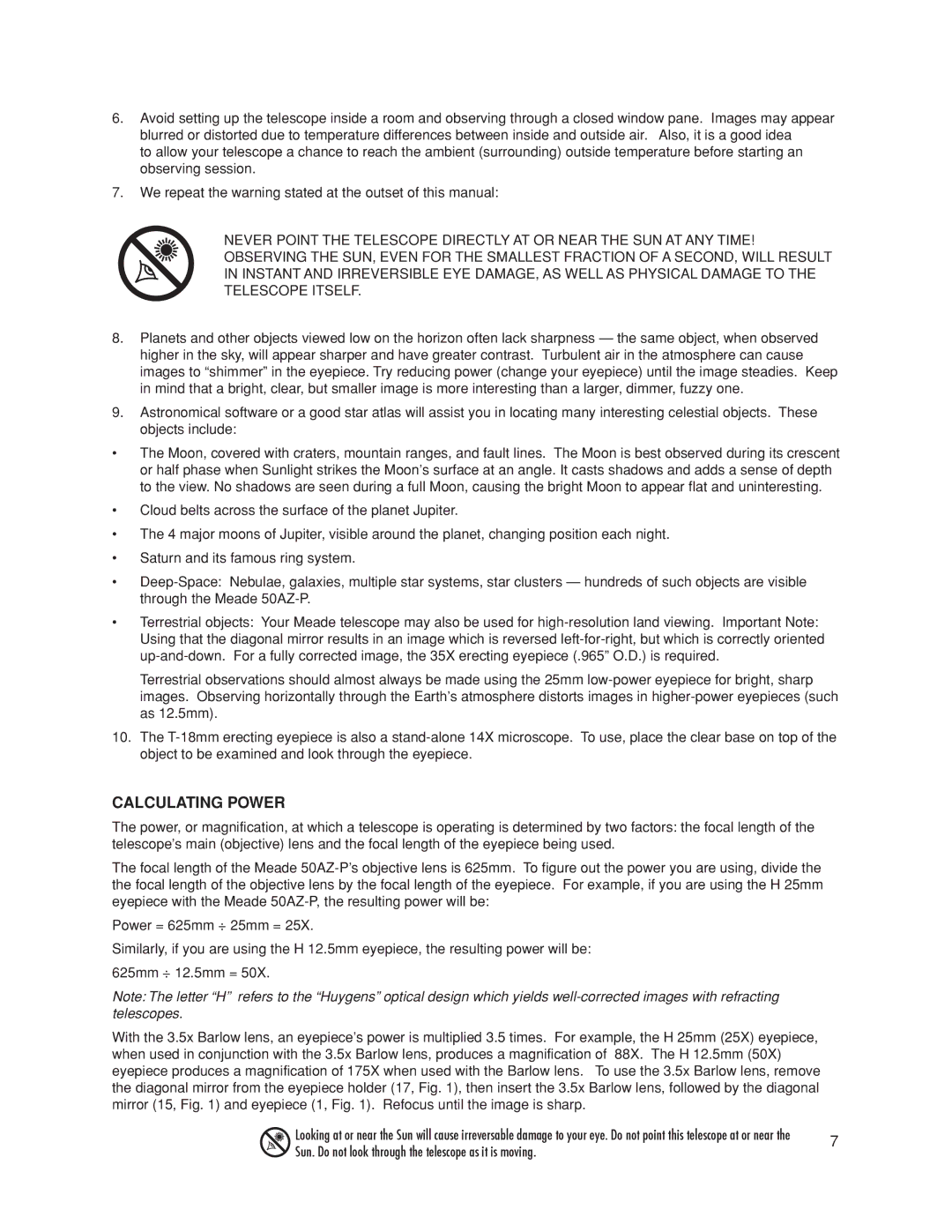Meade 50AZ-P specifications
The Meade 50AZ-P is an entry-level telescope designed for amateur astronomers and beginners who are looking to explore the wonders of the night sky. Its compact and user-friendly design makes it an ideal choice for those starting their journey in astronomy. The 50AZ-P is particularly noted for its portability, making it easy to transport to various observation sites, whether it be the backyard or a remote location.One of the standout features of the Meade 50AZ-P is its 50mm aperture, which allows for decent light-gathering capabilities. This means that users can observe celestial objects with clarity, including the moon's craters, Saturn's rings, and various star clusters. The telescope comes with a wide range of eyepieces, allowing users to enjoy different magnifications for diverse viewing experiences.
The telescope is equipped with an altazimuth mount, providing smooth and simple movement in both vertical and horizontal directions. This straightforward design is particularly beneficial for beginners, as it makes tracking celestial objects easier. The mount is also stable, ensuring clear and steady views even when switching between objects.
In terms of technology, the Meade 50AZ-P incorporates a simple red dot finder that assists users in locating celestial objects effortlessly. This added feature simplifies the stargazing process, especially for novices who might find traditional finderscope setups challenging. With the red dot finder, users can quickly and easily navigate across the night sky.
The Meade 50AZ-P is constructed with quality materials, ensuring durability and longevity. The telescope's lightweight design further enhances its portability, making it easy to carry and set up. Additionally, the telescope includes a carry bag for added convenience during transport.
The telescope also comes with a comprehensive user manual, providing helpful tips for setup, usage, and maintenance, which is especially useful for novice astronomers. As a bonus, Meade often provides educational resources and guides to help users maximize their stargazing experience.
In conclusion, the Meade 50AZ-P is an excellent choice for anyone wanting to get started in astronomy. With its user-friendly features, solid construction, and thoughtful technology, this telescope allows budding astronomers to embark on their celestial explorations with confidence and ease.

